
Identifying the Core Message
Introduction to Identifying the Core Message
Every compelling product story begins with a core message, the essence of what you're trying to communicate to your audience. This isn't just about what your product does but why it matters. Identifying this core message is crucial because it serves as the foundation upon which the entire narrative is built. It's about distilling the product's purpose, its unique value proposition, and its potential impact on the user's life into a concise statement that resonates emotionally and intellectually with your target audience. When thinking about effective product presentation design, the core message must guide every aspect of how the product is communicated visually and verbally.
Background and Importance
Understanding the core message involves deep diving into the product's features, benefits, and differentiators. It requires a clear understanding of your target audience's pain points, desires, and what makes your product stand out in a crowded market. Historically, products that succeed are those that not only meet a practical need but also connect on an emotional level. This emotional connection is often built on a well-defined and relatable core message, which is integral to the product presentation services that deliver powerful and engaging demos.
Real-world examples, like Apple’s iPhone, demonstrate how a clear core message resonates. It wasn’t just about launching a smartphone; it was about revolutionizing communication. This emotional connection ties directly into storytelling in product presentations—showing how your product improves lives and solves problems.
Real-World Application
Consider Apple's introduction of the iPhone. The core message wasn't about launching a new smartphone; it was about revolutionizing the way people communicate, work, and entertain themselves. This core message of innovation and integration into every aspect of daily life transformed the smartphone from a luxury to a necessity. Similarly, Airbnb's core message goes beyond offering accommodation options; it's about creating a sense of belonging anywhere in the world. These examples illustrate the power of a well-crafted core message in shaping product perception and consumer behavior. This idea ties into effective product presentation design, where every element in the presentation, from visuals to text, supports the core message.
Supporting Data and External References
Studies have shown that products with a clear, compelling core message are more likely to capture consumer interest and loyalty. A Nielsen report highlighted that 63% of consumers prefer to buy products and services that have a purpose they find meaningful. Furthermore, a Harvard Business Review article emphasized the significance of emotional engagement in product success, pointing out that customers are three times more likely to recommend and purchase when they have an emotional connection to a product manager brand.
Don't let subpar presentations hold you back. Our experts craft high-impact presentations that drive results. Let’s create something powerful together!
Building a Narrative Structure

Introduction to Building a Narrative Structure
Crafting a narrative structure is akin to constructing a bridge between your product and the audience, guiding them through a journey that illuminates the product's essence and its relevance in their lives. This structure is not merely about the sequence of events or features but about creating a compelling arc that captivates and maintains interest. A well-structured narrative integrates the product vision and core message seamlessly, ensuring that every element of the story contributes to the overall objective of making the product not just seen but felt by the audience. Storytelling in product presentations is the key here—building a storyline that emotionally engages your audience.
Background and Importance
A compelling example of narrative structure in product presentations can be seen in how GoPro markets its cameras. Rather than focusing solely on product specifications, GoPro narratives often start with the thrill of adventure—a challenge or desire shared by its target audience. The story progresses to great stories that showcase how the product enables extraordinary personal experiences and captures them in stunning detail, concluding with the shared joy and community around these adventures. This journey not only highlights the product's features but also its role in enabling a lifestyle that resonates with the audience.
From Fortune 500s to innovative startups, we’ve helped brands elevate their presentations.
A compelling example of narrative structure in product storytelling can be seen in how GoPro markets its cameras. Rather than focusing solely on product specifications, GoPro narratives often start with the thrill of adventure—a challenge or desire shared by its target audience. The story progresses to great stories that showcase how the product enables extraordinary personal experiences and captures them in stunning detail, concluding with the shared joy and community around these adventures. This journey not only highlights the product's features but also its role in enabling a lifestyle that resonates with the audience.
Supporting Data and External References
Research supports the effectiveness of a strong narrative structure in enhancing memorability and engagement. According to a study published in the Journal of Marketing, narratives in product storytelling significantly increase audience engagement and information retention compared to traditional factual presentations. Another study from Stanford University found that stories are 22 times more memorable than facts alone. These findings underscore the importance of a narrative structure that weaves together the product's features with the audience's emotional and aspirational threads.
Emotional Engagement Through Storytelling

Introduction to Emotional Engagement Through Storytelling
Emotional engagement through storytelling is a transformative tool in the realm of product presentations, turning passive listeners into active participants who feel a personal connection with the narrative. This approach leverages emotions to create a memorable and meaningful experience, ensuring the product story isn't just heard but felt. By tapping into universal emotions such as joy, fear, surprise, or desire, storytellers can forge a powerful emotional bond between a well-crafted product story and the audience, making the product's value proposition not just understood but emotionally significant. This plays directly into the effectiveness of engaging product presentation scripts that help connect with the audience on an emotional level.
Background and Importance
Emotions play a crucial role in decision-making. Neuroscientist Antonio Damasio's research highlights that emotion is a necessary ingredient in almost all decisions. When a product story evokes emotions, it can significantly enhance recall, preference, and loyalty. Emotional engagement is particularly effective in crowded markets where functional differences between products are minimal. In such cases, emotional storytelling can differentiate a product by imbuing it with meaning beyond its features or price.
Real-World Application
Nike's advertising campaigns offer prime examples of emotional engagement through storytelling. Rather than focusing solely on the technical aspects of their products, Nike stories often center on the emotional journeys of athletes overcoming adversity. These narratives tap into feelings of determination, resilience, and triumph, connecting the audience emotionally with the brand and its products. The "Just Do It" slogan is more than a call to action; it's an invitation to be part of a larger, inspirational story.
Supporting Data and External References
The effectiveness of emotional engagement in storytelling is backed by data. A study conducted by the Advertising Research Foundation found that emotionally charged stories are twice as likely to generate high recall and sales effectiveness as compared to factual messaging. Additionally, a Gallup study revealed that customers with a strong emotional connection to a brand have a 3.3 times higher lifetime value. These statistics underscore the power of emotional storytelling in creating lasting impressions and driving consumer behavior.
Incorporating User Testimonials and Success Stories
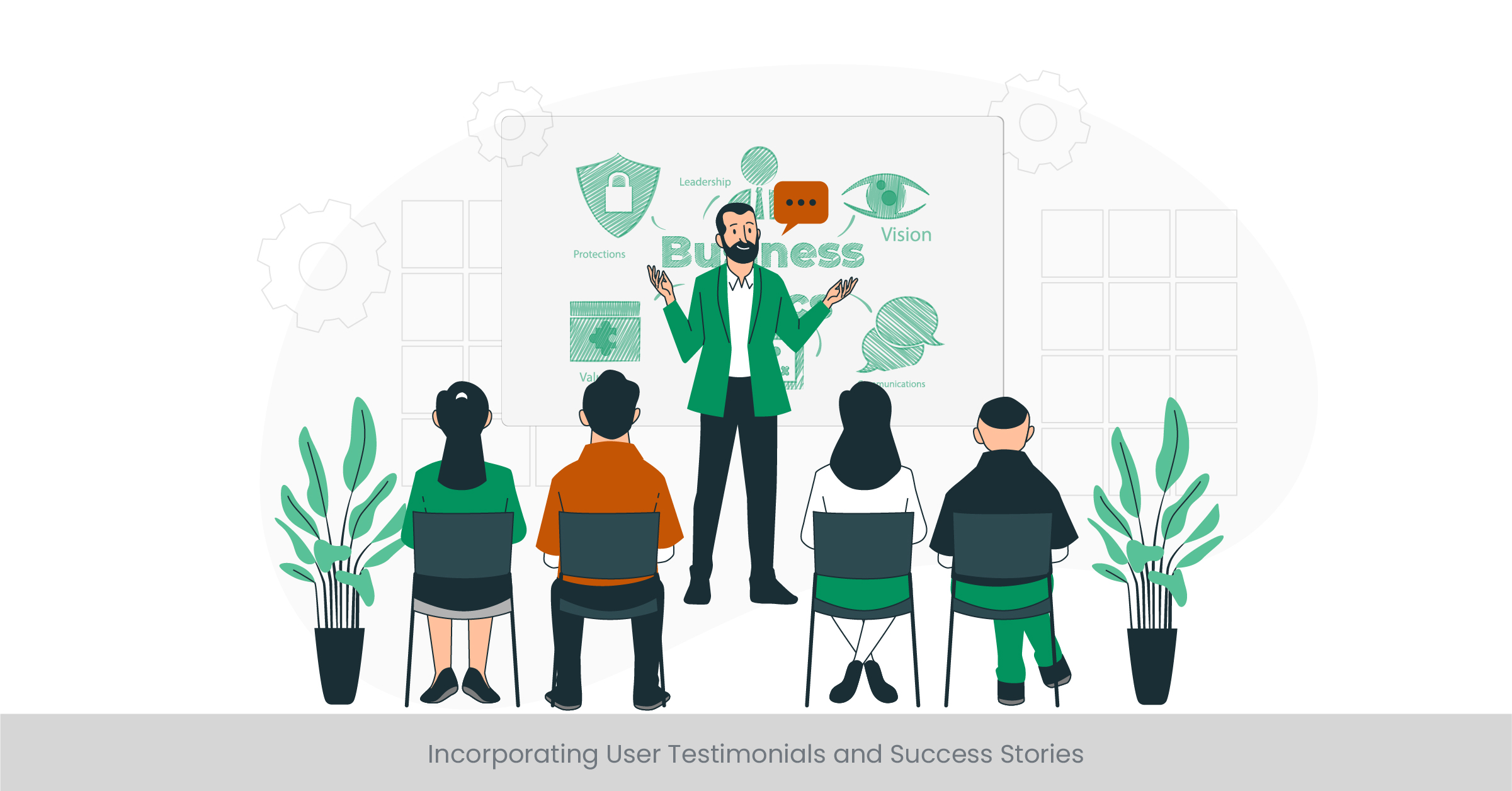
Introduction to Incorporating User Testimonials and Success Stories
Integrating user testimonials and success stories into product presentations is a powerful strategy to validate your product's value through real-world applications and experiences. This method not only adds credibility to your narrative but also allows potential customers to see the tangible impact of your product on people like themselves. It's a way of showing rather than telling, where the success of your product is narrated by those who have experienced its benefits firsthand, making the product story more relatable and persuasive. This helps strengthen visual communication in product demos by showcasing real-world applications that demonstrate your product’s value.
Background and Importance
The psychology behind the effectiveness of testimonials and success stories lies in the concept of social proof, a principle suggesting people's actions are influenced by the actions and opinions of others. In the context of product storytelling, hearing about the positive experiences of others can significantly lower the perceived risk of trying a new product and can enhance the audience's trust in the brand. This trust is crucial in the decision-making process, especially in markets saturated with alternatives.
Real-World Application
A notable example of this approach is how Airbnb uses guest and host stories to showcase the unique, authentic experiences enabled by its platform. These narratives often highlight personal growth, unexpected friendships, and the discovery of new cultures, directly tying user journey back to Airbnb's core message of belonging. By sharing these stories, Airbnb demonstrates the transformative potential of its service, moving beyond the functional aspects of its platform to highlight the emotional and experiential benefits.
Supporting Data and External References
Research underscores the impact of testimonials and success stories in enhancing consumer trust and decision-making. According to Nielsen, 92% of people trust recommendations from peers, and 70% trust consumer opinions posted online, even from strangers. These statistics illustrate the significant influence of user experiences in shaping perceptions and driving conversions. Additionally, a study in the Journal of Marketing found that products with user testimonials saw a 270% increase in the likelihood of purchase compared to those without.
The Role of the Storyteller: Presenter's Influence

Introduction to The Role of the Storyteller: Presenter's Influence
The role of the storyteller in product presentations transcends mere narration; it embodies the essence of leadership, persuasion, and emotional intelligence. The presenter's influence is pivotal in breathing life into the product's story, making the narrative compelling, and ensuring the message not only reaches the audience but also resonates with them. A storyteller's ability to connect, engage, and inspire trust can significantly impact the audience's perception of the product, transforming interest into conviction. A skilled presenter can elevate product presentation services, turning them into memorable experiences.
Background and Importance
Historically, the most memorable stories across cultures were those delivered by charismatic storytellers who mastered the art of engagement. In the context of effective product presentation design and sales pitches, the storyteller's role is to create a bridge between the product and the audience, employing a blend of verbal and non-verbal cues to convey passion, authenticity, and conviction. The effectiveness of a presentation often hinges on the presenter's skill in using tone, body language, and storytelling techniques to evoke emotions and foster a connection. Storytelling in product presentations is not just about delivering information—it's about making the audience feel something and connecting emotionally to the product.
Real-World Application
Steve Jobs, co-founder of Apple Inc., exemplified the immense power of a storyteller's influence. His product presentations were iconic, transforming the launch of new products into cultural events. Jobs's ability to weave narrative, demonstration, and personal conviction into each presentation did not just showcase product features; it invited the audience into a shared vision of the future, making each listener feel part of something larger than themselves. This approach turned customers into loyal advocates, illustrating the transformative power of storytelling in product presentations.
Supporting Data and External References
The impact of a good storyteller's influence is supported by research in communication and psychology. Studies indicate that presentations delivered with enthusiasm and confidence are more persuasive and are rated more favorably by audiences (Journal of Personality and Social Psychology). Furthermore, a study by the University of Minnesota found that speakers who effectively use engaging product presentation scripts can increase audience retention rates by up to 70%, highlighting the critical role of the presenter in ensuring the message not only is delivered but sticks.
Want to keep up with the latest design trends, storytelling techniques, and visual strategies? Join our blog community and never miss an update.
Using Visuals to Enhance Your Story

Introduction to Using Visuals to Enhance Your Story
In the landscape of product presentations, visuals act as a powerful conduit for storytelling, capable of conveying complex information succinctly and evoking emotions that words alone cannot. The strategic use of visuals—be it images, diagrams, videos, or infographics—can significantly enhance the narrative, making it more engaging, memorable, and persuasive. This fusion of visual storytelling with verbal narration invites the audience into a multi-sensory experience, deepening their connection to the product story. Effective visual communication in product demos can elevate the overall experience, making it more impactful.
Background and Importance
The human brain processes visual information 60,000 times faster than text, highlighting the efficiency and impact of visual aids in communication. Furthermore, visuals have the unique ability to cross language barriers and connect with a diverse audience on an instinctual level. From the earliest cave paintings to modern digital media, visuals have been an integral and essential part of human storytelling, underscoring their enduring power to inform, persuade, and move audiences. Visual communication in product demos is therefore an essential tool in conveying complex ideas in a digestible and engaging way.
Real-World Application
A compelling example of the use of visuals in product storytelling is IKEA's catalog and showroom design. Through meticulously staged photographs and room sets, IKEA doesn't just display products; it tells stories of lifestyle, comfort, and design. This approach allows customers to visualize the products in their own lives, sparking imagination and desire. Similarly, the use of explainer videos by companies like Dropbox to illustrate their product's functionality showcases how visuals can simplify complex information, making it accessible and engaging.
Supporting Data and External References
The effectiveness of visuals in enhancing storytelling is well-documented. According to the Social Science Research Network, 65% of people are visual learners, indicating a significant portion of the audience prefers and better retains information presented visually. Moreover, a study by the Wharton School of Business found that sales presentations made using visual aids were 67% more effective in persuading audiences than those without. These findings underscore the vital role of visuals in enriching product presentations and amplifying the story's impact.
Tailoring Stories to Different Audiences
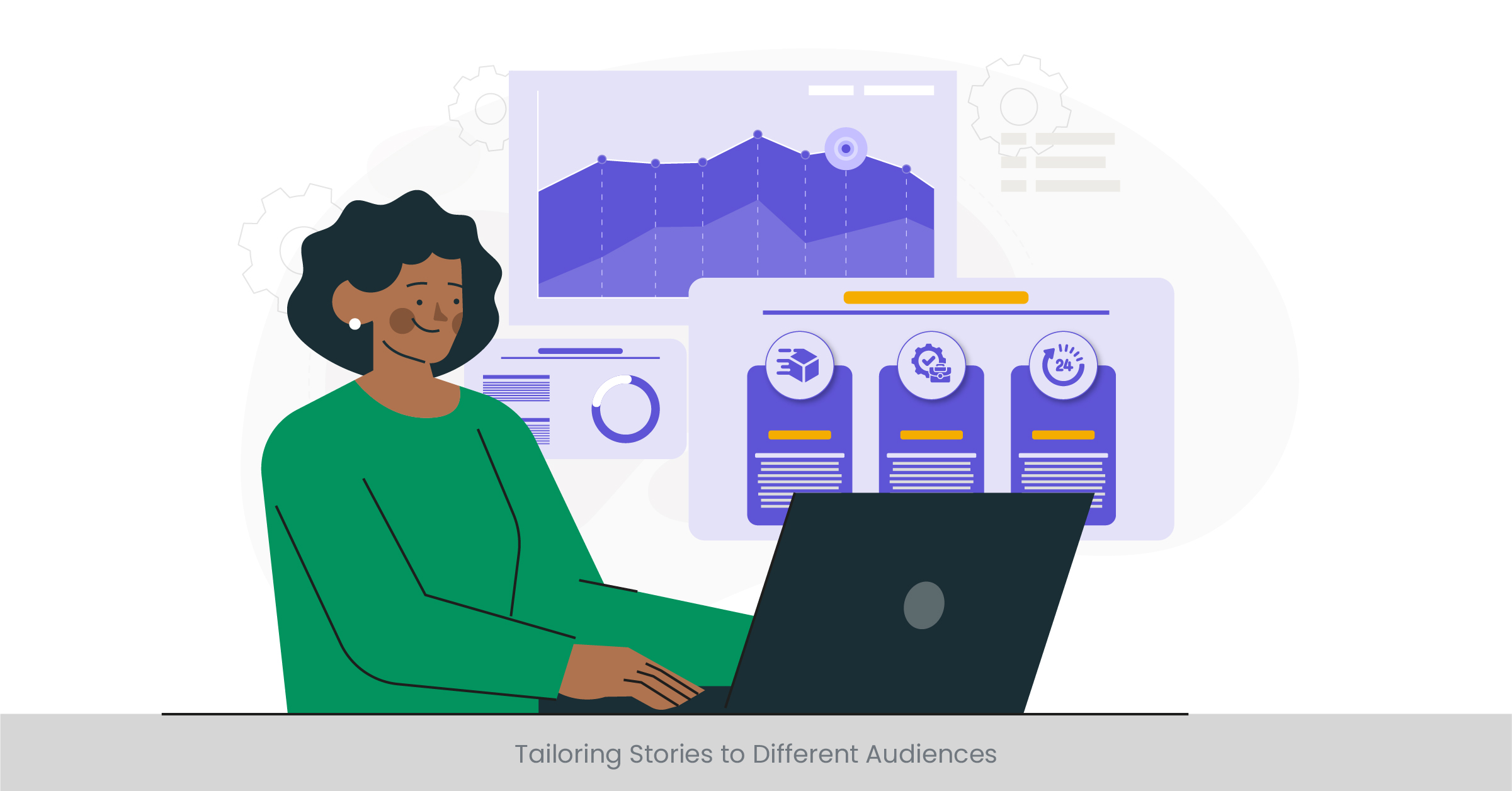
Introduction to Tailoring Stories to Different Audiences
Effective product storytelling is not a one-size-fits-all endeavor. It demands a nuanced understanding of your audience and the flexibility to adjust your narrative to meet their unique needs, values, and perspectives. Tailoring your product stories to different audiences ensures that your message resonates on a personal level, increasing the relevance and impact of your product presentation. This personalized approach not only demonstrates empathy and understanding but also significantly enhances the persuasiveness of your product presentation services.
Background and Importance
Understanding your audience is foundational in crafting a story that speaks directly to their experiences, challenges, and aspirations. This involves segmenting your audience based on demographic, psychographic, and behavioral data, and then customizing the narrative to align with each segment's specific interests and needs. The engaging product presentation scripts process here is akin to a skilled chef preparing a meal that caters to the dietary preferences of each guest, ensuring satisfaction and appreciation.
Real-World Application
An illustrative example of this practice can be seen in the marketing strategies of health and wellness brands like Nike and Fitbit. These companies segment their audiences into categories such as professional athletes, casual exercisers, and health-conscious individuals looking to improve their lifestyle. Each segment receives tailored messages that highlight different features of the product, from performance enhancement for athletes to health monitoring for wellness enthusiasts. This targeted approach ensures that the product story is relevant and compelling to each audience segment.
Supporting Data and External References
The effectiveness of audience segmentation and tailored storytelling is backed by substantial research. A report by the Direct Marketing Association found that segmented and targeted emails generate 58% of all revenue, highlighting the financial impact of personalized communication. Additionally, a study published in the Journal of Consumer Research revealed that personalized stories significantly increase consumer engagement and brand loyalty compared to generic narratives. These findings underscore the importance of tailoring stories to different audiences in maximizing the effectiveness of product presentations.
Integrating Product Features into Your Narrative
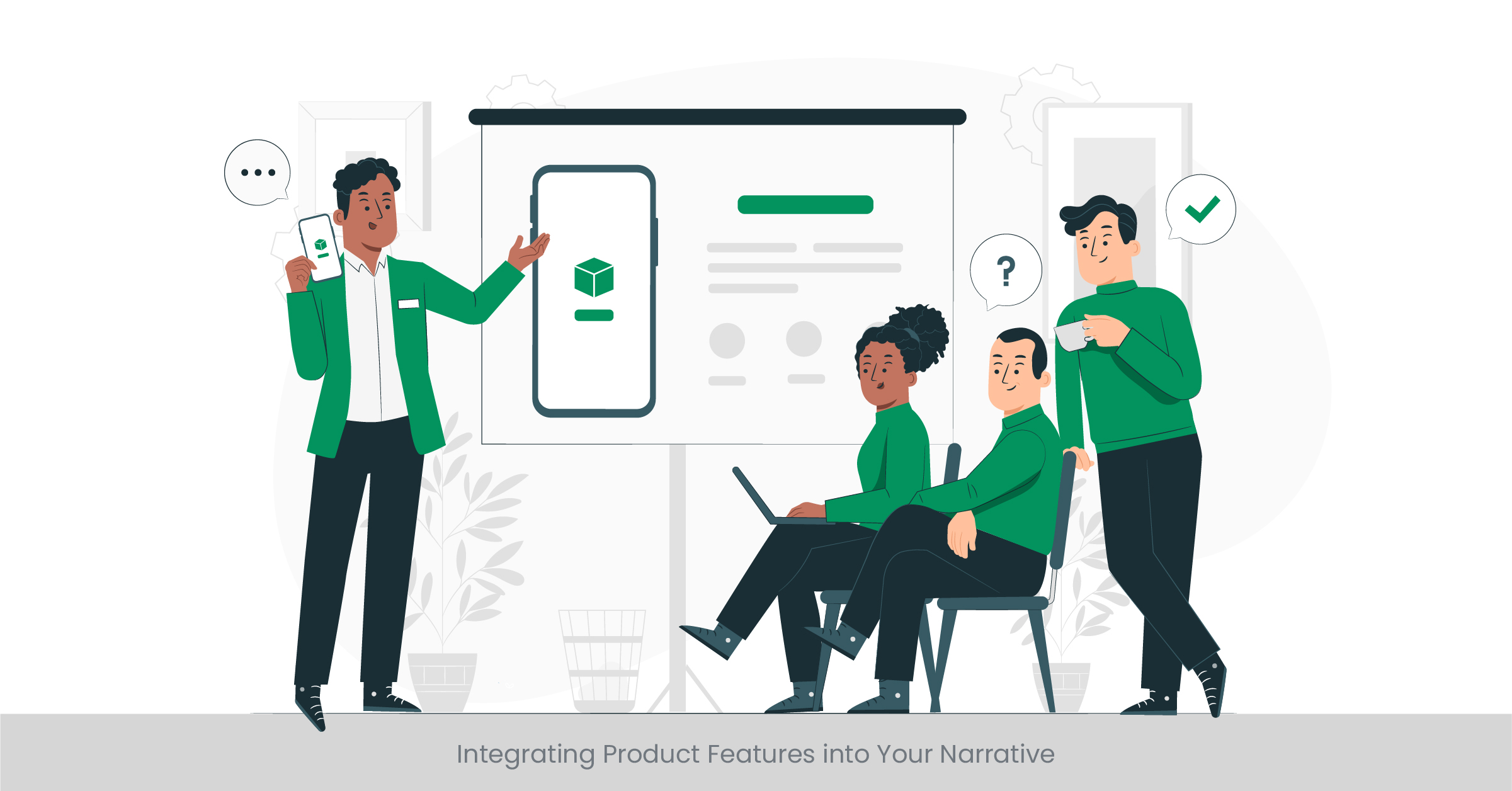
Introduction to Integrating Product Features into Your Narrative
Integrating product features into your narrative skillfully bridges the gap between showcasing what your product does and why it matters to your audience. This strategic approach goes beyond listing specifications; it weaves the features into a compelling user story that highlights their impact on the user's life or work. By embedding product features within a narrative context, you make the benefits tangible and the product more desirable, turning features into solutions that address real-world problems or aspirations. This can significantly enhance the effective product presentation design process.
Want to create presentations that captivate? Get proven design strategies from industry experts. View our free guide now and level up your next big pitch!
Background and Importance
The essence of integrating product features into a narrative lies in the transition from telling to showing. This method not only informs but also engages the audience by illustrating how the product can enhance their life or solve their problems. It's a storytelling technique that adds depth to the narrative, making it more relatable and convincing. Historically, products that have been presented as part of a larger story, one that aligns with the audience's values and experiences, have seen more success in connecting with their target market.
Real-World Application
Apple's product presentations provide a masterclass in integrating features into narratives. For instance, when introducing the iPhone's camera upgrades, Apple doesn't just talk about megapixels or lens specifications. Instead, they share stories and visuals that show the camera enabling professional-level photography for everyday users, capturing moments in stunning clarity that were previously only possible with high-end equipment. This narrative approach transforms technical features into compelling benefits that resonate with the audience's aspirations and needs.
Supporting Data and External References
The effectiveness of narrative integration of product features is supported by research. A study published in the Journal of Marketing found that narratives that include product features as part of a story enhance the audience's understanding and retention of product information. Furthermore, according to Nielsen's Global Trust in Advertising Report, 92% of consumers trust earned media, such as word-of-mouth or recommendations, over traditional advertising. When product features are presented within a narrative, they are more likely to be perceived as trustworthy and memorable, leading to higher engagement and conversion rates.
Storytelling Across Different Platforms (Webinar, Live Presentation, Video)

Introduction to Storytelling Across Different Platforms
In today's digital age, storytelling across different platforms—webinars, live presentations, and videos—offers unique opportunities and challenges in crafting compelling product narratives. Each platform has its own set of dynamics, audience expectations, and engagement tools, necessitating a tailored approach to storytelling. Mastering the art of platform-specific storytelling allows for a wider reach and deeper connection with diverse audience segments, making your product story more versatile and impactful. The importance of visual communication in product demos becomes even more apparent across these diverse formats.
Background and Importance
The landscape of digital storytelling is vast, with each platform offering distinctive features for interaction and engagement. Webinars provide an educational format that can delve deeply into product details with a live Q&A session, live presentations allow for immediate audience feedback and personal connection, and videos offer the advantage of visual storytelling with the potential for wide dissemination through social media. Understanding the strengths and limitations of each platform is crucial for optimizing your product presentation services and engagement.
Real-World Application
Tesla's approach to product storytelling exemplifies effective platform diversification. For live presentations, Elon Musk's charismatic delivery captivates the audience, making each launch an event that's both informative and entertaining. On the other hand, Tesla's use of video, especially for showcasing features like Autopilot, demonstrates the product in action, providing tangible evidence of its capabilities. Webinars and online forums are utilized to educate potential customers on the technical and environmental advantages of electric vehicles, fostering a community of informed advocates.
Supporting Data and External References
A report by the Content Marketing Institute highlighted that marketers who use a multi-platform approach have a 72% higher success rate in achieving their goals compared to those who don't. Additionally, a study published in the International Journal of Business Communication found that audience engagement rates can increase by up to 50% when storytelling is adapted to suit the specific features of the platform. These findings underscore the importance of versatile storytelling strategies in enhancing the reach and impact of your product story.
Get hands-on presentation design tips from experts. Watch our step-by-step tutorials and master the art of impactful storytelling.
Continuity in Storytelling Across Product Lines
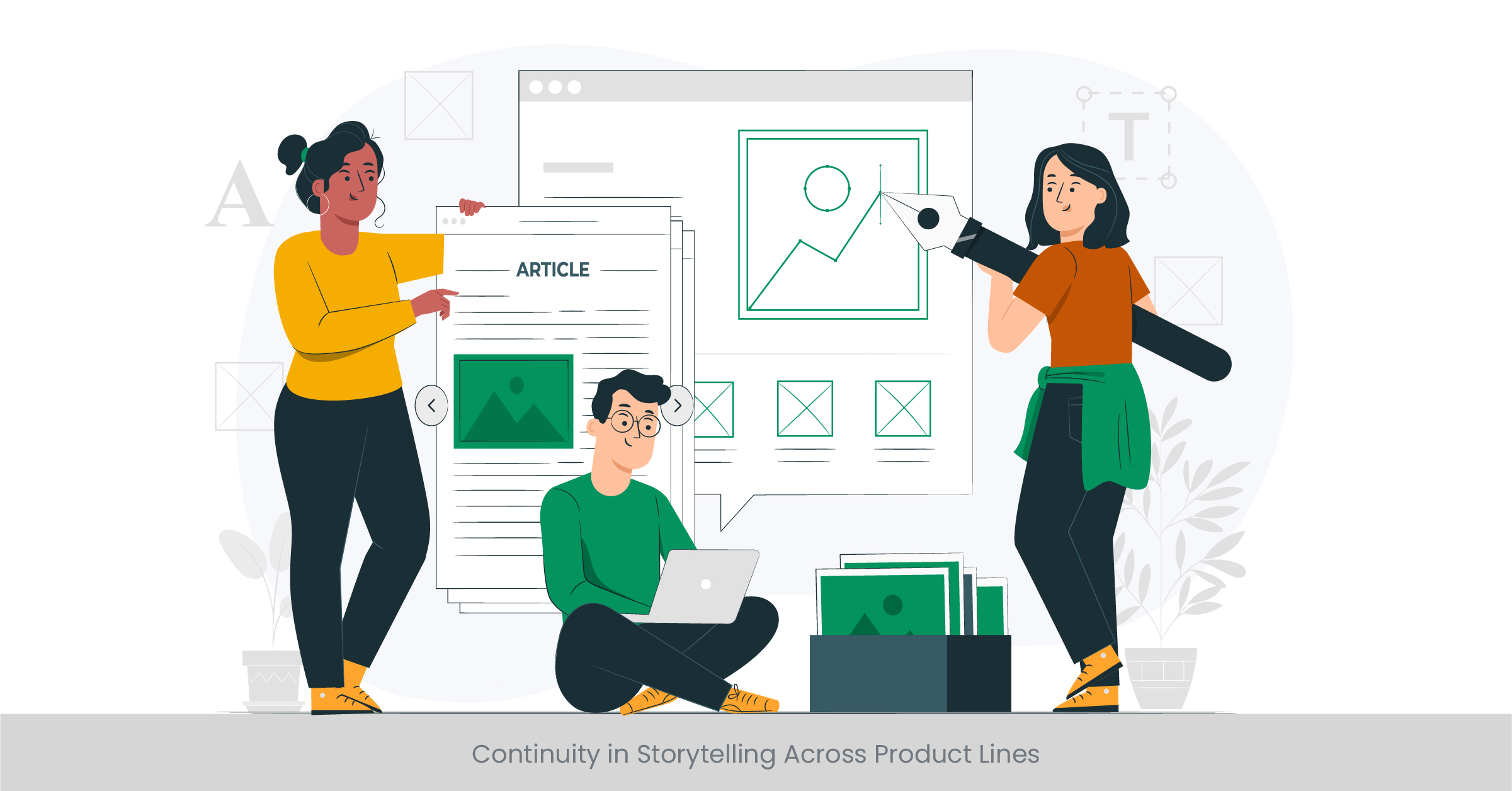
Introduction to Continuity in Storytelling Across Product Lines
Maintaining continuity in storytelling across product lines is vital for building a cohesive brand narrative that resonates with your audience over time. This strategic approach ensures that each product story is not isolated but is part of a larger brand saga that reflects consistent themes, values good stories, and messages. Such continuity fosters a strong brand identity, making it easier for customers to understand and relate to your products on a deeper level, thus enhancing brand loyalty and customer engagement.
Background and Importance
Continuity in storytelling involves more than just repeating the same message; it's about creating a narrative thread that links different products in a way that each story contributes to and enriches the brand's overarching narrative. This strategy not only aids in reinforcing brand recognition but also in establishing a brand legacy that customers feel connected to. It's a practice deeply rooted in the way humans perceive and relate to stories, where continuity and consistency are key to comprehension and emotional investment.
Real-World Application
An exemplary brand that utilizes continuity in product strategy and storytelling is Coca-Cola. Despite its diverse product range, Coca-Cola's storytelling consistently emphasizes themes of happiness, connection, and inclusivity. Whether it's a holiday commercial or a social media campaign for a new product, the core brand message remains unmistakable and coherent. This narrative consistency across products and campaigns has cemented Coca-Cola's position not just as a beverage company but as a purveyor of joy and togetherness.
Supporting Data and External References
Research underscores the importance of narrative continuity for brand success. A study in the Journal of Consumer Psychology found that brands with consistent storytelling across all touchpoints saw a 20% increase in brand perception compared to those with fragmented narratives. Furthermore, according to a Nielsen report, consistent brand presentation across all platforms increases revenue by up to 23%. These statistics highlight the significant impact of maintaining continuity in storytelling on enhancing brand strength and customer loyalty.
FAQs
How do I make a presentation of my product?
To create an engaging product presentation, start by identifying the core message you want to convey. Build a narrative structure around this message, integrating your product's features into the story. Use visuals to enhance the narrative and ensure the presentation is tailored to your target audience. Remember, the role of the storyteller is crucial; present with confidence and authenticity.
What are the basic outlines for a product presentation?
A basic outline for a product presentation includes an introduction to the product's core message, a discussion of its features and benefits, incorporation of user testimonials or success stories, and a conclusion that reinforces the product's value proposition. Tailoring the presentation to different audiences and using visuals can also enhance its effectiveness.
What does a good product presentation look like?
A good product presentation effectively communicates the product's value proposition through a compelling narrative. It integrates product features seamlessly into the story, engages the audience emotionally, and uses visuals to illustrate points clearly. Successful presentations are also tailored to the audience's needs and interests.
What are the advantages of product presentation?
Product presentations allow for a direct and engaging way to showcase your product's benefits and features to potential customers. They can help build emotional connections, enhance brand perception, and provide a platform for demonstrating the product's impact through stories and visuals. Effective presentations can significantly increase interest and drive sales.
What is the best way to present a product?
The best way to present a product is by crafting a story that resonates with your audience, highlighting how the product solves their problems or enhances their life. Utilize visuals to support your narrative and ensure your presentation addresses the specific interests and needs of your target audience. Authenticity and enthusiasm from the presenter can make a significant difference in engagement.
How do you write a product presentation?
Writing a product presentation involves outlining the key points you want to cover, including the product's features, benefits, and unique value proposition. Embed these elements within a story that connects with your audience. Include testimonials and success stories for credibility, and plan for visual aids to make your presentation more engaging.
How do you present an idea for a product?
Presenting an idea for a product requires a clear articulation of the problem it solves, its unique features, and the benefits it offers. Frame your idea within a compelling narrative that demonstrates its value and potential impact. Engage your audience with visuals and stories, and be prepared to answer questions with confidence.
How do you present a product project?
To present a product project, start with a clear overview of the project objectives and the product concept. Discuss the product development process further, highlight key features and benefits, and show how the product addresses user needs. Incorporate visuals and stories to make your presentation more dynamic and engaging.
How do you give a good product presentation?
Giving a good product presentation involves preparation, understanding your audience, and presenting with confidence. Structure your presentation around a compelling story that includes the product's features and benefits. Use visuals to support your narrative, and make sure to engage with your audience, inviting questions and feedback.
What is included in a product presentation?
A product presentation typically includes an introduction to the product, an overview of its features and benefits, user testimonials or success stories, and a conclusion that emphasizes the product's value. Visual aids, demonstrations, and interactive elements can also be included to enhance engagement.
What are the 5 important items in effective presentation?
The five important items in an effective presentation are a clear and compelling narrative, engaging visuals, a strong opener and closer, audience interaction, and a confident presenter. Tailoring the presentation to your audience's preferences and needs is also crucial for its success.
How do I make a presentation for selling products?
Making a presentation for selling products involves highlighting the product's benefits and how it solves specific problems or improves the customer's life. Include testimonials and success stories to build credibility, and use engaging visuals to illustrate your points. Tailor your presentation to appeal to your target customers' needs and desires.
How do you tell a story in a product presentation?
Telling a story in a product presentation involves framing the product within a narrative that addresses the audience's needs, aspirations, or challenges. Start with a relatable problem or situation, introduce your product as the solution, and conclude with the positive outcomes achieved through using the product. Make the story engaging and relevant to your audience.
How do you do storytelling in a presentation?
Storytelling in a presentation is done by weaving your information into a narrative that connects with the audience on an emotional level. Use real-life examples, user stories, and vivid descriptions to bring your story to life. Structure your presentation with a clear beginning, middle, and end to keep your audience engaged throughout.
What are the 5 C's of storytelling?
The 5 C's of storytelling are Context (setting the scene), Conflict (introducing a problem or challenge), Climax (the turning point), Conclusion (resolution), and Change (how the story leads to change or transformation). These elements help structure a compelling narrative that captures the audience's interest.
What is product storytelling?
Product storytelling is the art of using narrative techniques to convey the value and benefits of a product. It involves integrating the product's features into a story that resonates with the audience, making the product more relatable and desirable. Effective product storytelling can enhance emotional engagement and drive sales.


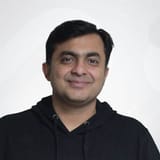
%20(1).jpg)
%20(1).jpg)


